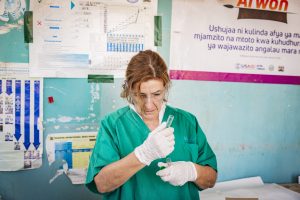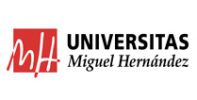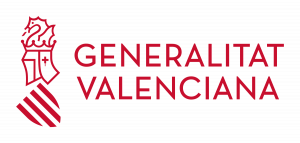Interview with UMH professor, Kika Colom, who is working on a cooperation project in Turkana to improve the health of Kenyan people
We interviewed UMH professor of microbiology, Kika Colom, with whom we traveled to the county of Turkana, Kenya, to learn about the university development cooperation project, “Improving the Health of the Turkana Population through the Prevention of and Treatment for Neglected Tropical Diseases.” This project is part of a 2020 agreement established by the UMH and co-funded by the Regional Ministry of Transparency, Social Responsibility, Participation and Cooperation at the Generalitat Valenciana.
A few years ago, Colom started coordinating the “Mycetoma in Turkana” project, which has enabled progress in the study of this tumor-like infection. Then, in 2021, she started this university development cooperation project, which aims to improve the health of Turkana residents through the prevention of and treatment for neglected tropical diseases.
To begin, could you briefly explain what the “Improving the Health of the Turkana Population through the Prevention of and Treatment for Neglected Tropical Diseases” project consists of?
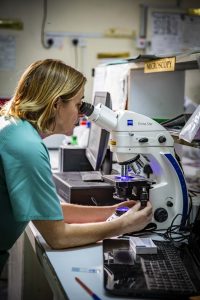 The project has two fundamental parts. The first is to investigate the epidemiological situation (number of cases and such) of neglected diseases present in Turkana. So-called neglected diseases occur in poor and warm areas of the world, are usually infectious or parasitic, and despite being highly prevalent in these areas, they hardly receive any health attention. More specifically, we want to learn about the state of neglected diseases in the county of Turkana, which is the poorest county in Kenya. The second part of the project is to contribute to the training of area health professionals so they can address these diseases as properly as possible. When working on campaigns, if we do not train locals, the effects of our assistance simply vanish the very moment we depart.
The project has two fundamental parts. The first is to investigate the epidemiological situation (number of cases and such) of neglected diseases present in Turkana. So-called neglected diseases occur in poor and warm areas of the world, are usually infectious or parasitic, and despite being highly prevalent in these areas, they hardly receive any health attention. More specifically, we want to learn about the state of neglected diseases in the county of Turkana, which is the poorest county in Kenya. The second part of the project is to contribute to the training of area health professionals so they can address these diseases as properly as possible. When working on campaigns, if we do not train locals, the effects of our assistance simply vanish the very moment we depart.
In sum, the idea is to learn of the situation and to train local health professionals to address the problems with manageable measures, ultimately helping area development and ensuring that the effects last.
Could you provide us with examples of some of the infectious diseases that are especially prevalent in Turkana?
The World Health Organization (WHO) has declared six neglected and prevalent diseases in this area of Kenya: echinococcosis, filariasis, trachoma, mycetoma, visceral leishmaniasis (also known as black fever), and snakebite. For our project, we chose three: mycetoma, visceral leishmaniasis, and snakebite. These were chosen for two fundamental reasons: their prevalence, and the real possibility of being able to help prevent them.
With respect to these diseases, what improvements or prevention actions could be implemented to prevent them?
As for those caused by mosquito bites (vectors), we aim to adhere to various measures that have already been implemented to prevent malaria. Furthermore, we take care of delivering more information to the population—for example, recommending the use of mosquito netting not only at night. However, leishmaniasis is caused by sand flies, and they bite in other environments and at other times. Training the population and health professionals with specific measures for each of these diseases is important. Especially so is raising awareness in the population so that when they encounter a health problem, they see a health professional so that said problem does not worsen. This action is complicated given that resources are scarce, there is only one physician for every 70,000 inhabitants, and the population is dispersed and there is no easy access to health centers.
The diseases you mention are caused by insect bites, such as mosquitoes and flies, but what is mycetoma, and how does it spread?
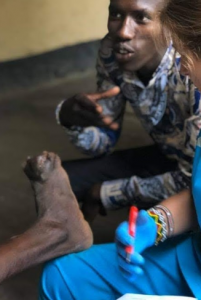 Mycetoma is a tumor-like infection that is contracted by contact with fungi and bacteria. Normally, it is caused by foot injuries, like from wooden slivers or rocks where the microorganism is present. This way, it penetrates the skin and there it can develop. For this reason, we must insist on the population wearing closed shoes and improving the capacity of health professionals to prevent it, since there are many opportunities to treat it if it is caught early.
Mycetoma is a tumor-like infection that is contracted by contact with fungi and bacteria. Normally, it is caused by foot injuries, like from wooden slivers or rocks where the microorganism is present. This way, it penetrates the skin and there it can develop. For this reason, we must insist on the population wearing closed shoes and improving the capacity of health professionals to prevent it, since there are many opportunities to treat it if it is caught early.
If you get a wooden sliver with fungus and it begins to grow, you would normally see a physician where they would remove it, and if necessary, provide medicine to eliminate the fungus. However, given the health system deficiencies for the Turkana population, the fungus is allowed to grow, and eventually becomes something disabling, large in size, which then is only resolved by limb amputation.
What do you think is the greatest challenge you are facing regarding implementing prevention methods?
The most complicated challenge is reaching the population because there are few health professionals who know how to transmit information properly, and many people there are semi-nomadic, who have never attended a health center, and are illiterate.
As for the previous project, Mycetoma in Turkana, which was co-funded by the UMH and the Generalitat Valencia by the 2018 university cooperation agreement, what stages have advanced and what have you been able to discover and implement?
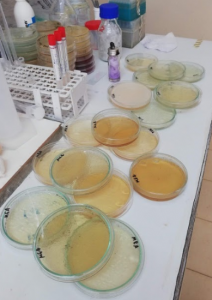 I need to mention that the Turkana Surgical Team has been working on detecting mycetoma for 17 years already, but it wasn’t until 2016, when the WHO declared it a neglected disease, and this is what aroused the interest of professionals and investigators of this disease, which had been practically forgotten and ignored. In 2018, I contacted the team of surgeons from the project thanks to a student from that team who came to give a conference at the congress of UMH medical students, and it surprised me how many cases and how advanced they really were. This is why I become interested in this pathology, since I thought that if treated early, it could improve, and thus, I began on this project.
I need to mention that the Turkana Surgical Team has been working on detecting mycetoma for 17 years already, but it wasn’t until 2016, when the WHO declared it a neglected disease, and this is what aroused the interest of professionals and investigators of this disease, which had been practically forgotten and ignored. In 2018, I contacted the team of surgeons from the project thanks to a student from that team who came to give a conference at the congress of UMH medical students, and it surprised me how many cases and how advanced they really were. This is why I become interested in this pathology, since I thought that if treated early, it could improve, and thus, I began on this project.
When I arrived there the first time, we contacted the local health professionals who detected the cases and took them to Lodwar County Referral Hospital. It was there that we began to analyze them. Thanks to the analyses, we discovered that a bacterium produces this type of problem there, and this discovery was a significant advance in learning of the problem in Turkana. We now have two people trained who know how to examine it and focus the treatment. And among the group of surgeons, there is another person who understands the proper surgical treatment. Furthermore, the most difficult part is the medical treatment, for it is quite expensive, and for advanced cases of mycetoma, the treatment takes a long time.
What development cooperation project would you like to undertake next?
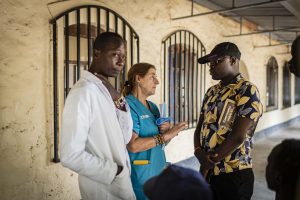 There are two important ideas in my head whose intent is to contribute to the development of the Kenyan people so that they gain the appropriate tools, and then, from within, they would be able to prevent and treat these diseases. First of all, I would very much like to treat echinococcosis, a severe parasitic disease that is caused by a worm. You see children with this disease who are treated by eliminating the cyst. However, as these children’s way of lives are going to continue being the same, it is likely that they get infected again since it is transmitted between animals, and also from animals to water and food. Because of this, we need to find a multidisciplinary approach with participation by veterinarians, engineers, physicians, microbiologists, and surgeons to begin eradication programs for this disease in Turkana. Second, I would like to conduct a project to prevent the emergence of antimicrobial resistance. Only a few antibiotics are available there, and they do not examine whether they function against certain bacteria. This way, I would very much like to look at the situation and later be able to propose solutions to said resistance.
There are two important ideas in my head whose intent is to contribute to the development of the Kenyan people so that they gain the appropriate tools, and then, from within, they would be able to prevent and treat these diseases. First of all, I would very much like to treat echinococcosis, a severe parasitic disease that is caused by a worm. You see children with this disease who are treated by eliminating the cyst. However, as these children’s way of lives are going to continue being the same, it is likely that they get infected again since it is transmitted between animals, and also from animals to water and food. Because of this, we need to find a multidisciplinary approach with participation by veterinarians, engineers, physicians, microbiologists, and surgeons to begin eradication programs for this disease in Turkana. Second, I would like to conduct a project to prevent the emergence of antimicrobial resistance. Only a few antibiotics are available there, and they do not examine whether they function against certain bacteria. This way, I would very much like to look at the situation and later be able to propose solutions to said resistance.
